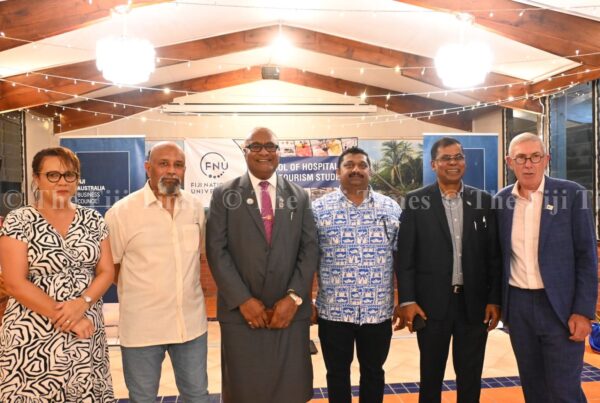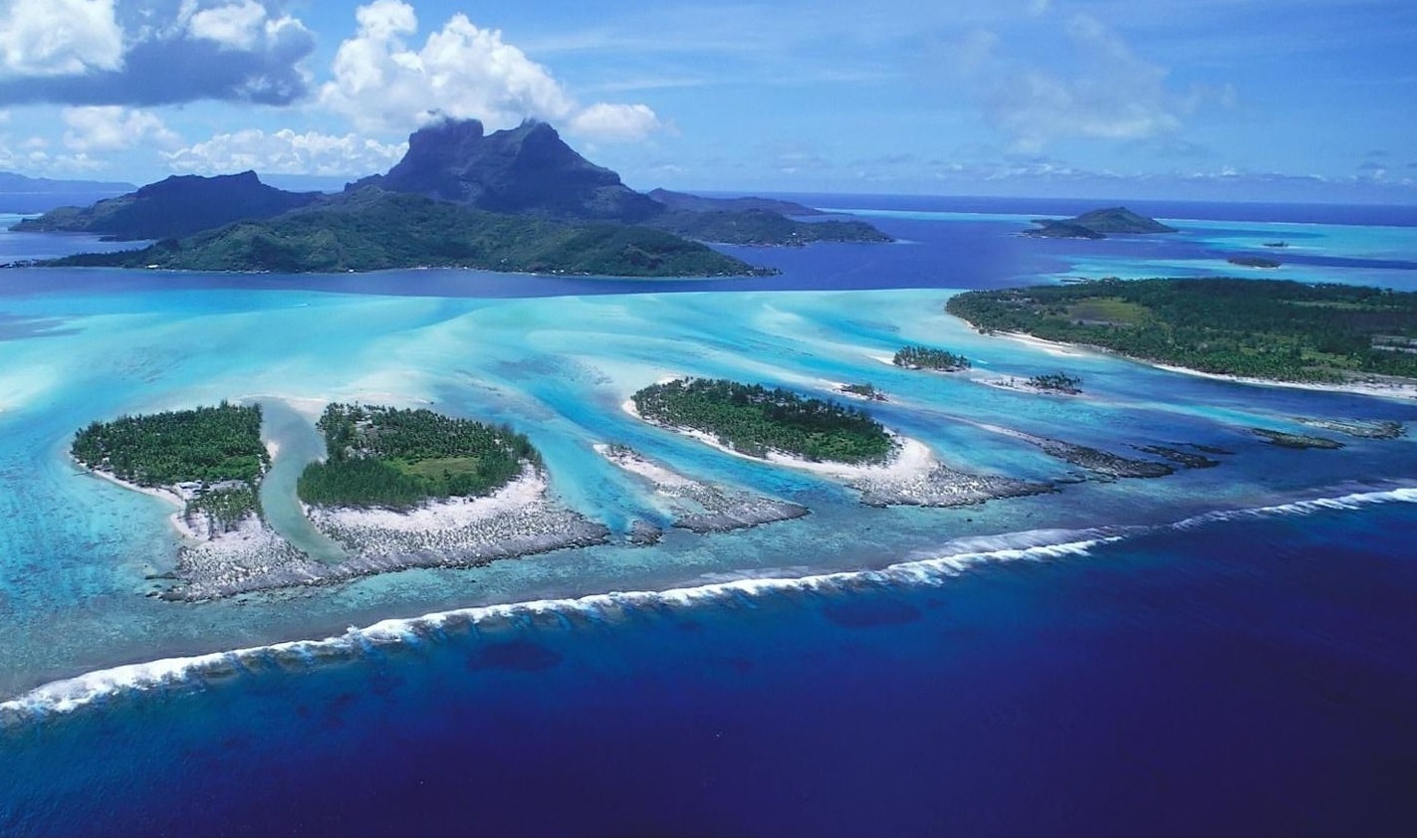




The Fiji archipelago includes more than 332 islands, of which 110 are inhabited and and additional 500 islets. Scattered across a total land area of 18,270 sq km, the two main islands are Viti Levu and Vanua Levu, comprising of 85 percent of the total land mass. The larger islands are primarily volcanic in origin and the smaller islands are mainly of coral or limestone. Currently the nation faces environmental issues like deforestation and soil erosion and in terms of land use, approximately 10.95% is allocated to arable land, 4.65 to permanent crops and the remaining 84.4% to other.
Centrally located in the Southwest Pacific Ocean, Fiji lies just west of the International Dateline. Although the 180th Meridian passes through the Fiji Group, the International Dateline is adjusted so that the islands fall into the same time zone, 12 hours ahead of Greenwich Mean Time (GMT). Nadi International Airport is 1710 kms (1063 miles) Northeast of Sydney, Australia; 1164 kms (724 miles) North of Auckland, New Zealand; 2756 kms (1713 miles) Southwest of Honolulu, Hawaii and 3851 kms (2393 miles) Southeast of Tokyo, Japan.
Fiji enjoys a mild tropical maritime climate without extremes of hot and cold, which is one of the key reasons for Fiji’s current reputation as one of the worlds most sought out holiday destination. In addition, maximum temperatures in Fiji rarely move out of the 31C to 26C range all year round. The Fijian climate also comprises of a wet season, which is normally experienced between November to April and is a direct result of the southerly wind movements of the South Pacific Convergence Zone. Catogorized by heavy and brief showers of rain, the wet season can also bring about natural disasters like Cyclone Winston or Zena.
Fiji’s Bureau of Statistics published in 2017 that Fiji’s population was 884,887, of which 55.9% of the population resides in urban areas and the other 44.1% residing in rural areas. The median age of the population is an estimated 27.5 years, which is an indication that more than half of the age is below the age of 27.5. Of the entire population, approximately 56.8% are of a Fijian and iTuakei background, 37.5% are Indians, 4.5% are others (comprising of European, part European, other Pacific Islanders, Chinese) and lastly 1.2% are Rotuman. The Pacific Community’s Statistics for Development Division reported that Fiji’s population in 2024 stands at 904,590.
http://www.investmentfiji.org.fj/
http://www.immigration.gov.fj/
Vera Chute (Value City) – President
Mark Halabe (Mark One Apparel) – Treasurer
Saud Minam (Fiji Development Bank) – Vice President
Himen Chandra (Comfort Home Furnishing) – Vice President
Warwick Pleass (Pleass Global) – Immediate Past President
Lisa Apted (KPMG) – Member
Rabih Yazbek (ANZ) – Member
Glenis Yee (Munro Leys) – Member
Shane Smith (Westpac Bank) – Member
Ajay Raniga (Budget Pharmacy) – Member
Bruce Sutton (SouthPac Advisory) – Member
Christine Lyons (The Fiji Times) – Member
Tim Joyce (Joyce Aviation) – Member

1986-87 James Huey, Westpac
1988-89 Ikbal Jannif, Cainnes Jannif Ltd
1990-91 Don Aidney. Williams & Gosling Ltd
1992-93 Greg Blakeny, Agri Services & Consultants
1994-95 Ross Addison, Wilson Addison
1996 Kevin Dwyer, Shell Fiji
1997-98 Dhiraj Hemraj, Pricewaterhouse Coopers
1999-2000 Mark Halabe, Mark One Apparel
2001-2002 Andrew Hogg, Qantas Airways
2003-04 Martin Darveniza, Tabua Investments
2005-06 David Evans, Westpac
2007-08 Caz Tebbutt, Tebbutt Research
2009-10 Wylie Clarke, Howards Law
2011-12 Ajay Raniga, Budget Pharmacy
2013-14 Kalpesh Solanki, Ranjit Garments
2015-16 Viliame Leqa, Pacific Manufacturing Ltd
2017-18 Dave Aidney, Williams & Gosling Ltd